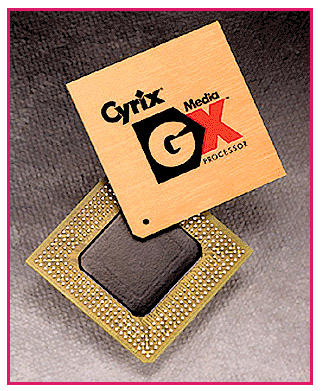| Not long ago, skeptics ridiculed the idea that a network
computer (NC) could cost less than $500. Today, you can
buy a real Windows PC for under $500 and consumer NCs for
under $300. The $499 Windows PC isn't a refurbished 486 with stripped-down features. The PowerSpec 1660 has a 166-MHz Cyrix MediaGX processor, 16 MB of extended data out (EDO) RAM, a 1-GB hard drive, a 12x CD-ROM drive, a 1.44-MB floppy drive, a 33.6-Kbps fax modem, and a pair of stereo speakers. It also has two serial ports, two PS/2 ports, a parallel port, a joystick port, and a shared PCI/ISA slot. It comes with Windows 95, Microsoft Works, Microsoft Money HomeBanking, Microsoft Entertainment Pack, and a one-year on-site warranty for parts and labor. All you need to add is a monitor and a printer. Although the PowerSpec 1660 clearly isn't a power-user system, it's a reasonable machine at a remarkable price. It's sold by Micro Center, a chain of computer stores that covers eight states. Elitegroup Computer Systems, a Taiwanese company, manufactures the PowerSpec 1660 for Micro Center. Elitegroup makes the motherboards in Taiwan and assembles the boxes in Fremont, California. Elitegroup says it can deliver a $299 Windows PC by the end of this year. "It might be sooner, but this is a safe prediction," says Ann Vo, a public-relations specialist at the company's Fremont office. Compaq, one of the top three PC vendors, helped pioneer this trend with the Presario 2100 in February 1997. Based on a 133-MHz MediaGX, the 2100 came in a sleek black desktop case and sold for $999. Soon afterward, Compaq introduced the Presario 2200, which has a faster 180-MHz MediaGX and a more aggressive price of $799. To put these bargain-basement systems into perspective, compare them with two of the most popular low-end computers of all time: the Commodore VIC-20 and the Commodore 64. The VIC-20 cost $299 at its introduction in 1981; the C-64 cost $595 when it first appeared in 1982. Adjusted for inflation, the $499 PowerSpec 1660 would cost about $271 in 1981 dollars and about $295 in 1982 dollars. The difference in horsepower, of course, is immense. The VIC-20 had a 1-MHz 6502 processor and 5 KB of RAM; the C-64 had a 1-MHz 6510 chip and 64 KB of RAM. Neither Commodore machine came with any kind of mass-storage device at their base price, while today's low-end systems come with three (hard drive, floppy drive, and CD-ROM drive). On the other hand, the Commodore computers had several features that most of today's PCs still aspire to: instant-on power; a plug-and-play serial bus for external peripherals; an easy-access, external expansion slot; integrated sound chips; integrated graphics; built-in joystick ports; an uncorruptible OS in ROM; a high-level programming language interpreter that was integrated with the OS (BASIC, not Java); no interrupt conflicts; no software conflicts; and no need to ever install software. With any luck, Windows PCs will catch up to most of those features by the next century. Meanwhile, technophobic consumers might consider a home NC. For under $300, they can buy a WebTV Plus Receiver from Sony or Philips that plugs into their TV and lets them browse the Web and exchange e-mail. This box has a built-in Rockwell K56flex modem, a 1.1-GB hard drive for caching Web pages, and the ability to download Web pages and software upgrades at 1 Mbps by decoding data in hidden TV scan lines. You can even hook up an ink-jet printer. What's important is that these low prices revive a market that PC clones haven't addressed for years. An amazing number of today's computer professionals started on a cheap home computer when they were youngsters in the 1970s and 1980s. The new low-priced PCs will seed another generation of technicians for the future. Power Those Under-$500 PCs Cyrix's MediaGX processor powers sub-$500
PCs.
Copyright 1994-1998 BYTE |